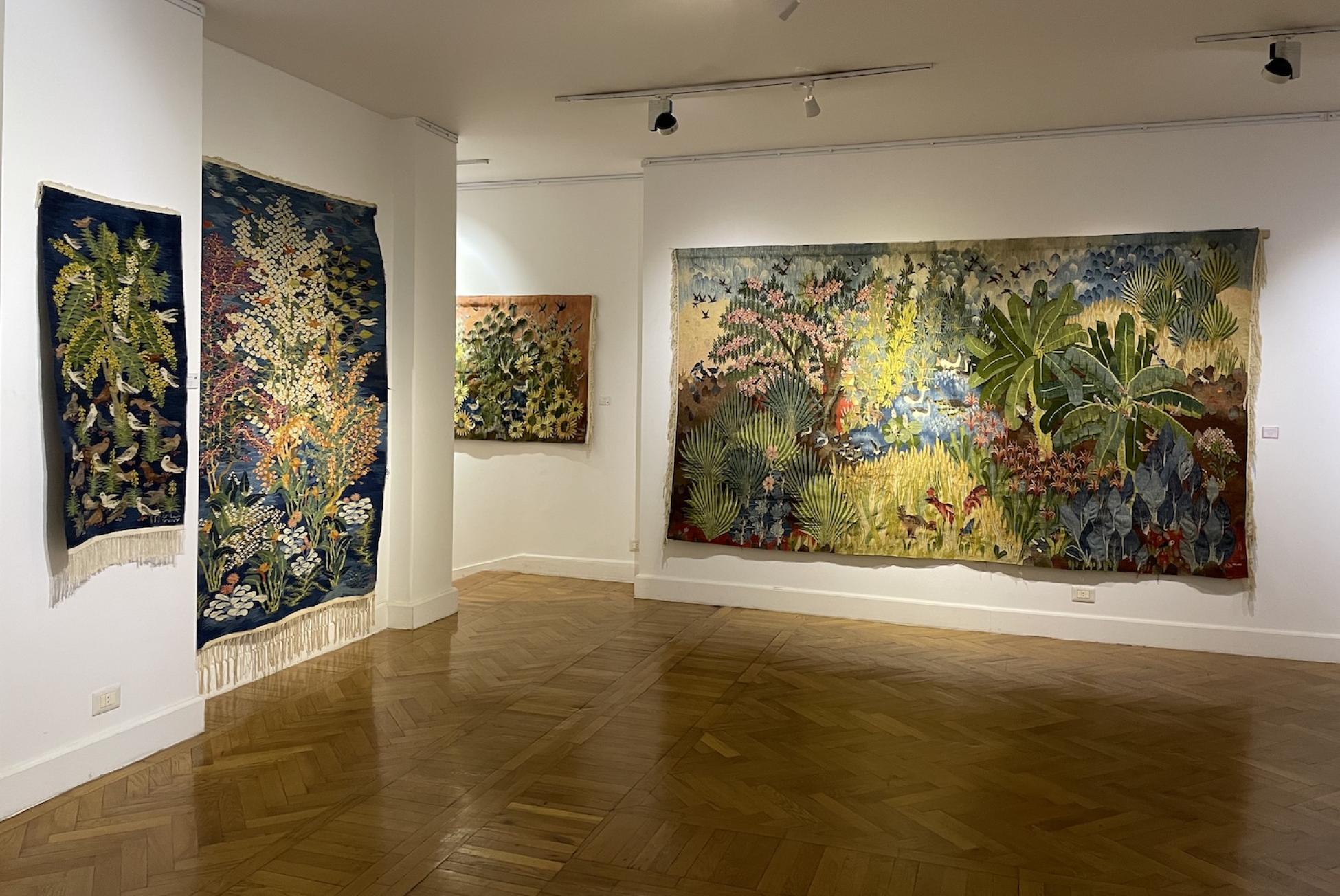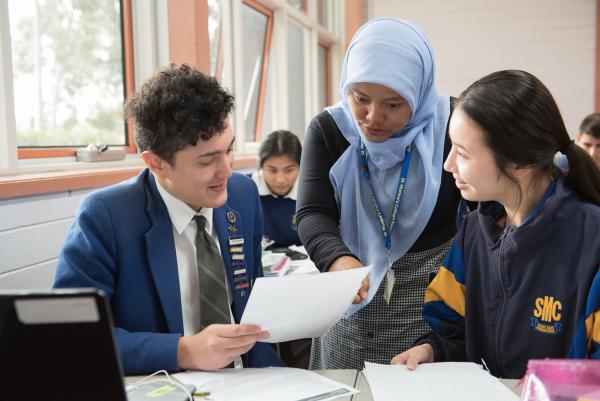It was while exploring the new National Museum of Civilization in Fustat, Cairo, that I stumbled across a Wissa Wassef tapestry. Exquisitely beautiful and every colour a blend of different shades, the tapestries were truly exquisite.
Alongside them were some quotes from Ramses Wissa Wassef and what struck me was the ethos behind the work: The idea that everyone is inherently creative. “All children are endowed with a creative power which includes an astonishing variety of possibilities,” He said.
As an artist and teacher this hit me hard. I’m tired of the education system and the way we train children, young people and adults out of creative thought and independence. We take someone with an open mind and educate them into sameness.
A few months later, I encountered the tapestries again. This time by accident on display at an art gallery in Zamalek. Once again, I found myself touched by the awe-inspiring achievement of these pieces. As someone who can competently learn and work in most visual art forms, they stumped me completely. I couldn’t wrap my head round them. The detail, technique, the time to produce them seemed overwhelming and yet you know they’ve been created in a state of calm, because that is the feeling they imbue.
I finally went to the Ramses Wissa Wassef Center this month. Founded in the 1950s by an Egyptian architect of the same name, the centre sets out to train artisans to produce truly creative and skillful work through their own individual exploration. The centre maintains the responsibility for the craftswomen’s income and work throughout their lives. The weavers start as children. There are no entry qualifications needed; they are local children who are paid for the training period to show their parents that this is serious work and will enable them to support their families in the future.
They are not shown external artwork or influences, which I find fascinating in contrast to Western arts education where people are overwhelmed with examples of other artist’s work and consequently, many stop creating. How can you reach that same level in a few years, compared to a lifetime of work? This isn’t taught to us in the West, but here, it takes 48 years for these women to produce their most accomplished work.
When they start a new tapestry, they don’t have a finished idea in mind, simply a story that they follow. They are taught to make work from their intuition, their innate feelings, sense and creativity (which interestingly, is the same approach that Egyptian belly dancing teaches). The weavers aren’t criticized. They are nurtured, encouraged and shown the love, belief and time to flourish. It can take from five months to over a year to complete a full tapestry. This is dependent upon the dedication of the weaver; if they have family commitments (usually dependent on their age), their emotional health, menstrual cycle, all of these are fully embraced, and no pressure is applied to ensure work is finished. There are no deadlines. All materials are naturally sourced, nothing is bought. It is a self-sufficient place. (I hesitate to use the word "business," because it doesn’t abide by the conventional rules of commerce.) Their work can be found in collections across the world, including London's Victoria & Albert Museum and Petrie Museum of Egyptian Archaeology.
It was such a calm, grounded place to be. No one was frazzled, drained or bad tempered. Everyone calmly created their work and it struck me: without ego.
The late Ramses Wissa Wassef is my artistic hero. His approach to creativity and child development would still be considered radical across the world, particularly in the West where our educational system is archaic. But he saw human beings as they fully are and the conditions in which they can thrive. Give anyone meaningful work and ample reward, and they will flourish.
Considering that in the Western world at the same time, we had artists who although yes contributed to the evolution of society and art in their own ways, were usually preoccupied with their sex lives, we should also look outside of our own society for inspiration and ideas that can benefit all. And in a generation where we are swamped by Instagram and TikTok on a daily basis, can you imagine how we might flourish without the constant barrage of other’s work?
Add this article to your reading list




